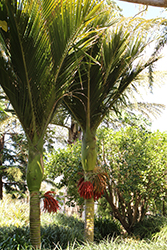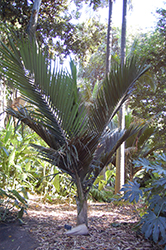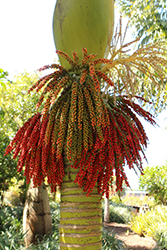Fri & Sat 8am - 8pm
Sun 8am - 7pm
Anytown, USA 12345
fax: 261.787.0463
e-mail: info@successgc.com


Plant Finder

Height: 30 feet
Spread: 15 feet
Sunlight:
![]()
![]()
Hardiness Zone: 9b
Other Names: Shaving Brush Palm, Feather Duster Palm
Description:
The only palm that is native to mainland New Zealand; its sturdy trunk is topped with a bulging green crownshaft bearing upswept, large, featherlike fronds that are closely set; very slow growing; an excellent potted plant, or vertical landscape accent
Ornamental Features
Nikau Palm is draped in stunning panicles of rose flowers with white overtones hanging below the branches from mid winter to early spring. It has attractive forest green foliage with grayish green undersides. The large narrow pinnately compound leaves are highly ornamental and remain forest green throughout the winter. The fruits are showy red drupes carried in abundance from mid summer to mid winter. The smooth gray bark and green branches add an interesting dimension to the landscape.
Landscape Attributes
Nikau Palm is an evergreen tree with a strong central leader and a towering form, with a high canopy of foliage concentrated at the top of the plant. Its relatively coarse texture can be used to stand it apart from other landscape plants with finer foliage.
This is a relatively low maintenance tree, and should never be pruned except to remove any dieback, as it tends not to take pruning well. It is a good choice for attracting birds to your yard. It has no significant negative characteristics.
Nikau Palm is recommended for the following landscape applications;
- Accent
- Vertical Accent
- Container Planting
Planting & Growing
Nikau Palm will grow to be about 30 feet tall at maturity, with a spread of 15 feet. It has a high canopy of foliage that sits well above the ground, and should not be planted underneath power lines. As it matures, the lower branches of this tree can be strategically removed to create a high enough canopy to support unobstructed human traffic underneath. It grows at a slow rate, and under ideal conditions can be expected to live to a ripe old age of 200 years or more; think of this as a heritage tree for future generations! This is a self-pollinating variety, so it doesn't require a second plant nearby to set fruit.
This tree does best in full sun to partial shade. It does best in average to evenly moist conditions, but will not tolerate standing water. It is not particular as to soil type or pH, and is able to handle environmental salt. It is somewhat tolerant of urban pollution, and will benefit from being planted in a relatively sheltered location. This species is not originally from North America..
Nikau Palm is a fine choice for the yard, but it is also a good selection for planting in outdoor pots and containers. Because of its height, it is often used as a 'thriller' in the 'spiller-thriller-filler' container combination; plant it near the center of the pot, surrounded by smaller plants and those that spill over the edges. It is even sizeable enough that it can be grown alone in a suitable container. Note that when grown in a container, it may not perform exactly as indicated on the tag - this is to be expected. Also note that when growing plants in outdoor containers and baskets, they may require more frequent waterings than they would in the yard or garden.


